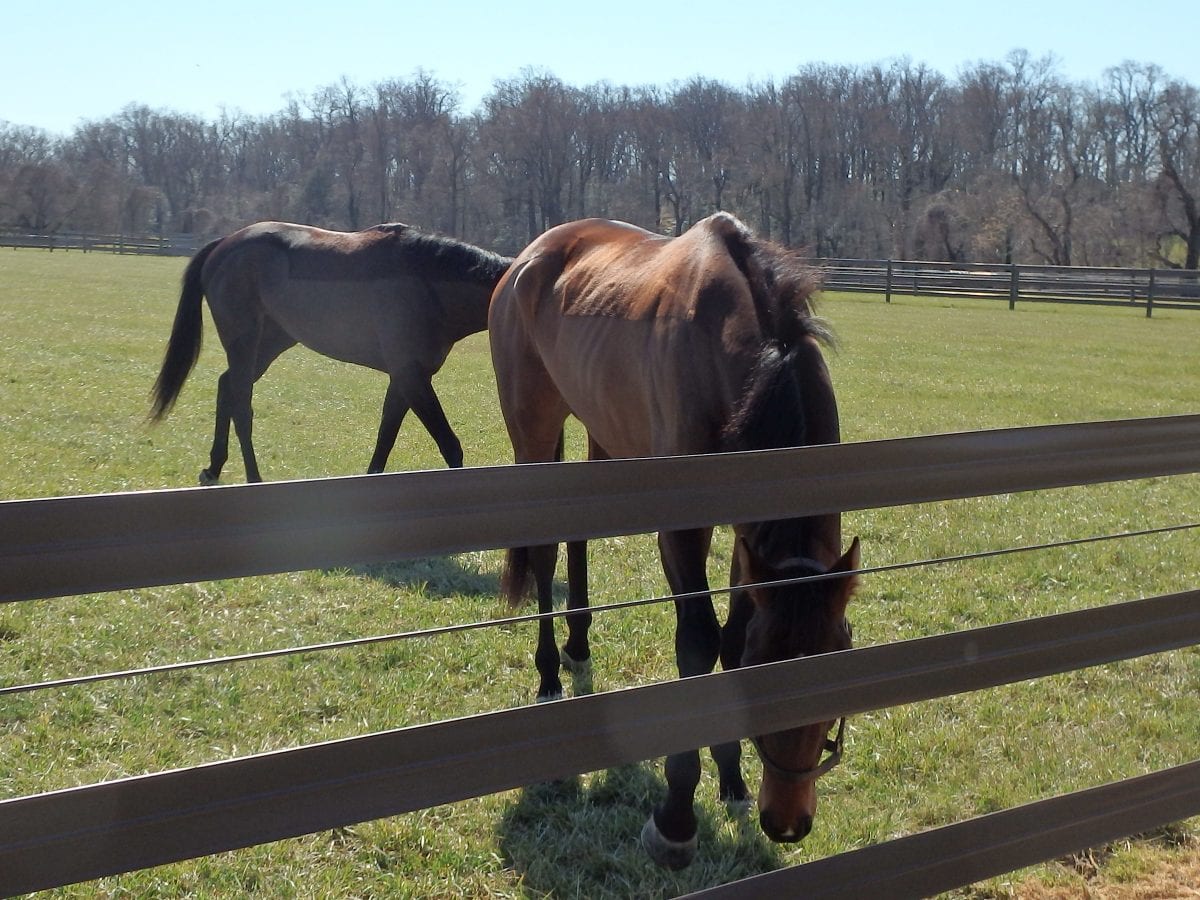Number of mares bred in mid-Atlantic falls despite Maryland gains

Staff report
Based on reports of mares bred received through October 15, 2016, The Jockey Club reports that 1,423 stallions covered 33,746 mares in North America during 2016.
The Jockey Club estimates an additional 2,000 to 3,000 mares will be reported as bred during the 2016 breeding season.
Of the total, 1,840 were bred by stallions standing in Maryland, Pennsylvania, West Virginia, Virginia, or New Jersey. That was a 13 percent drop from the 2,120 mares bred in 2015, according to the Jockey Club’s final state fact books.
While the overall number of mares bred declined, in at least one mid-Atlantic state there was good news. Maryland was one of just two states among the top 10 by number of mares bred — and the only state in the region — to see its numbers grow. The number of mares bred in the Free State grew by 15.8 percent, to 913; that placed it sixth among states in number of mares bred, up from eighth a year ago.
In Pennsylvania, the only other mid-Atlantic state among the top 10 in mares bred, the situation was reversed. Amid continuing uncertainty about the state’s breeding program, which has seen bonuses unpaid for months because of confusion over language in state legislation, the number of mares bred there fell 22 percent, to 489.
West Virginia took the biggest hit in 2016. The state reported 629 mares bred in 2015 but, according to the Jockey Club’s early reports, has had just 378 bred this year — a drop of 40 percent.
In New Jersey, the number of mares bred fell from 38 to 22, while in Virginia, the number was unchanged at 38.
The number of stallions nationwide declined 1.8% from the 1,449 reported at this time in 2015, and the number of mares bred decreased 2.5% from the 34,627 reported last year.
The number of stallions covering 100 or more mares decreased from 105 in 2015 to 100 in 2016. These stallions accounted for 40.6% of the total mares reported bred this year versus 41.8% of all mares bred in 2015. RMB statistics for all reported stallions in 2016 are available through the Fact Book section of The Jockey Club’s website at jockeyclub.com. Only one stallion in the region, Maryland-based Golden Lad, met that benchmark.
Further book size analysis shows a 5.4% decrease in the number of mares bred to stallions with a book size of 100 or more in 2016 when compared to 2015 as reported at this time last year; a 15.5% increase in mares bred to stallions with a book size between 75 and 99; a 2.6% decrease in mares bred to stallions with a book size between 50 and 74; a 4.4% increase in mares bred to stallions with a book size between 25 and 49; and a 7.8% decrease in mares bred to stallions with a book size fewer than 25.
The stallion Uncle Mo led all stallions with 253 mares bred in 2016. Rounding out the top five by number of RMBs were Into Mischief, 218; American Pharoah, 208; Kitten’s Joy, 201; and, tied for fifth, Goldencents, Verrazano, and Wicked Strong, 190.
Regionally, five of the top six sires by mares bred stand in Maryland. In addition to Golden Lad, those include Seville (84 mares), Friesan Fire (83), Bourbon Courage (79), and Imagining (76). El Padrino (83), based in Pennsylvania, is the lone exception.
Kentucky traditionally leads North America in Thoroughbred breeding activity. During 2016, Kentucky’s 227 reported stallions covered 17,750 mares, or 52.6% of all of the mares reported bred in North America. The number of mares bred to Kentucky stallions increased 1.73% percent compared with the 17,448 reported at this time last year.
Of the top 10 states and provinces by number of mares reported bred in 2016, Kentucky was the only state other than Maryland to see growth, with the number of mares bred there up 1.7 percent to 17,750.
[su_box title=”TOP SIRES BY STATE” style=”glass”]
- Maryland – Golden Lad, 104
- Pennsylvania – El Padrino, 83
- West Virginia – Fiber Sonde, 65
- Virginia – Fierce Wind, 12
- New Jersey – King Puma, 7







